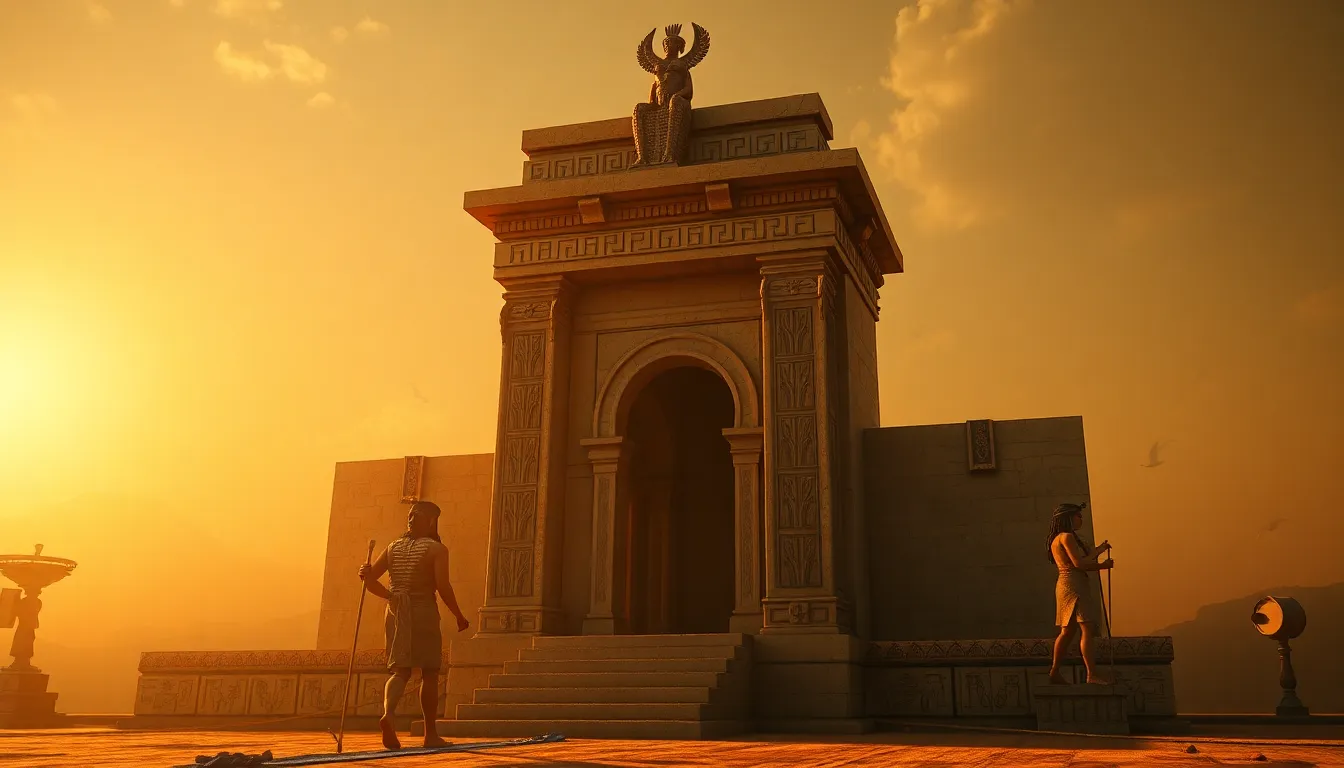The Temple of Hathor: Music, Dance, and Celebration
I. Introduction
The Temple of Hathor, located in Dendera, is one of the most significant temples in ancient Egypt. Dedicated to Hathor, the goddess of music, dance, and joy, the temple served as a vital center for worship and celebration in ancient Egyptian society. Music and dance were not mere entertainment; they were integral to religious practices and an expression of devotion. This article explores the historical context, the role of music and dance in the temple, the celebrations held in honor of Hathor, and the lasting legacy of these practices in ancient Egyptian culture.
II. Historical Context of the Temple of Hathor
The Temple of Hathor is situated in Dendera, about 2.5 kilometers from the Nile River. It boasts remarkable architectural features, including:
- A large hypostyle hall with intricately carved columns.
- Beautifully painted ceilings depicting astronomical themes.
- A sacred lake that played a role in ritual practices.
Hathor was revered as the goddess of motherhood, love, and joy, and she was often associated with music and dance. The temple served as a focal point for her worship, particularly during the Greco-Roman period when her cult flourished. It became a place where both locals and visitors engaged in religious festivities, showcasing the cultural importance of the goddess.
III. The Role of Music in the Temple
Music played a central role in the worship of Hathor. Various instruments were used, including:
- Lyres
- Flutes
- Drums
- Sistrums (a type of rattle)
The types of music performed during rituals ranged from hymns to celebratory songs, often accompanied by rhythmic drumming and melodic instruments. The symbolism of music was profound; it was believed that music could invoke the presence of the gods and create an atmosphere of sacredness during ceremonies.
IV. Dance as a Form of Worship
Dance was another essential aspect of worship at the Temple of Hathor. Traditional dance styles included:
- Circle dances, often performed by women.
- Ritual dances that told stories of the gods.
- Improvised dances that expressed personal devotion.
The relationship between dance and religious rituals was deeply intertwined. Dancers were not merely entertainers; they were seen as mediators between the divine and the earthly realm. Their movements were believed to convey messages to the gods, and they participated in ceremonies that honored Hathor, enhancing the spiritual atmosphere of the temple.
V. Celebrations and Festivals at the Temple
The Temple of Hathor hosted several major festivals, the most notable being:
- The Festival of the Opening of the Mouth, which celebrated the rejuvenation of the goddess.
- The Dendera Festival of Hathor, which involved processions, music, and dance.
During these festivals, activities included:
- Processions to the sacred lake for ritual cleansing.
- Performances by musicians and dancers showcasing their talents.
- Feasting and communal gatherings that strengthened community bonds.
The community’s involvement was crucial, as these celebrations fostered a sense of unity and shared cultural identity among the worshippers.
VI. The Symbolism of Music and Dance in Ancient Egypt
In ancient Egypt, music and dance were interpreted as offerings to the gods. They represented joy, fertility, and vitality, essential aspects of life that were believed to please the deities. The connection between music, dance, and fertility was particularly significant, as Hathor was often associated with motherhood and the nurturing aspects of life.
The impact of these art forms on spiritual beliefs was profound, as they were seen as essential components of worship that could influence the favor of the gods, ensuring prosperity and harmony in the community.
VII. Archaeological Discoveries and Modern Interpretations
Archaeological excavations at the Temple of Hathor have revealed a wealth of information about ancient Egyptian music and dance. Findings include:
- Detailed reliefs depicting musicians and dancers in action.
- Inscriptions that describe festivals and rituals associated with Hathor.
- Artifacts such as musical instruments that provide insight into their use.
Modern scholars have interpreted these discoveries to understand better the integral role of music and dance in the religious and social life of ancient Egyptians. They emphasize that these practices were not just forms of entertainment but essential elements of spiritual expression and community bonding.
VIII. Conclusion
In summarizing the importance of music and dance in the Temple of Hathor, it is clear that these practices were vital to the worship of the goddess and the cultural fabric of ancient Egyptian society. The legacy of Hathor continues to resonate today, as her associations with joy, fertility, and celebration find echoes in modern festivities and artistic expressions.
Ultimately, the Temple of Hathor stands as a testament to the rich cultural and spiritual heritage of ancient Egypt, highlighting the enduring significance of music and dance as universal languages of devotion and celebration.




